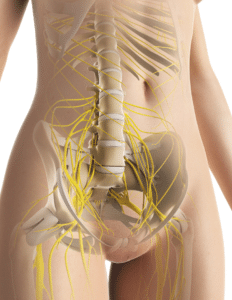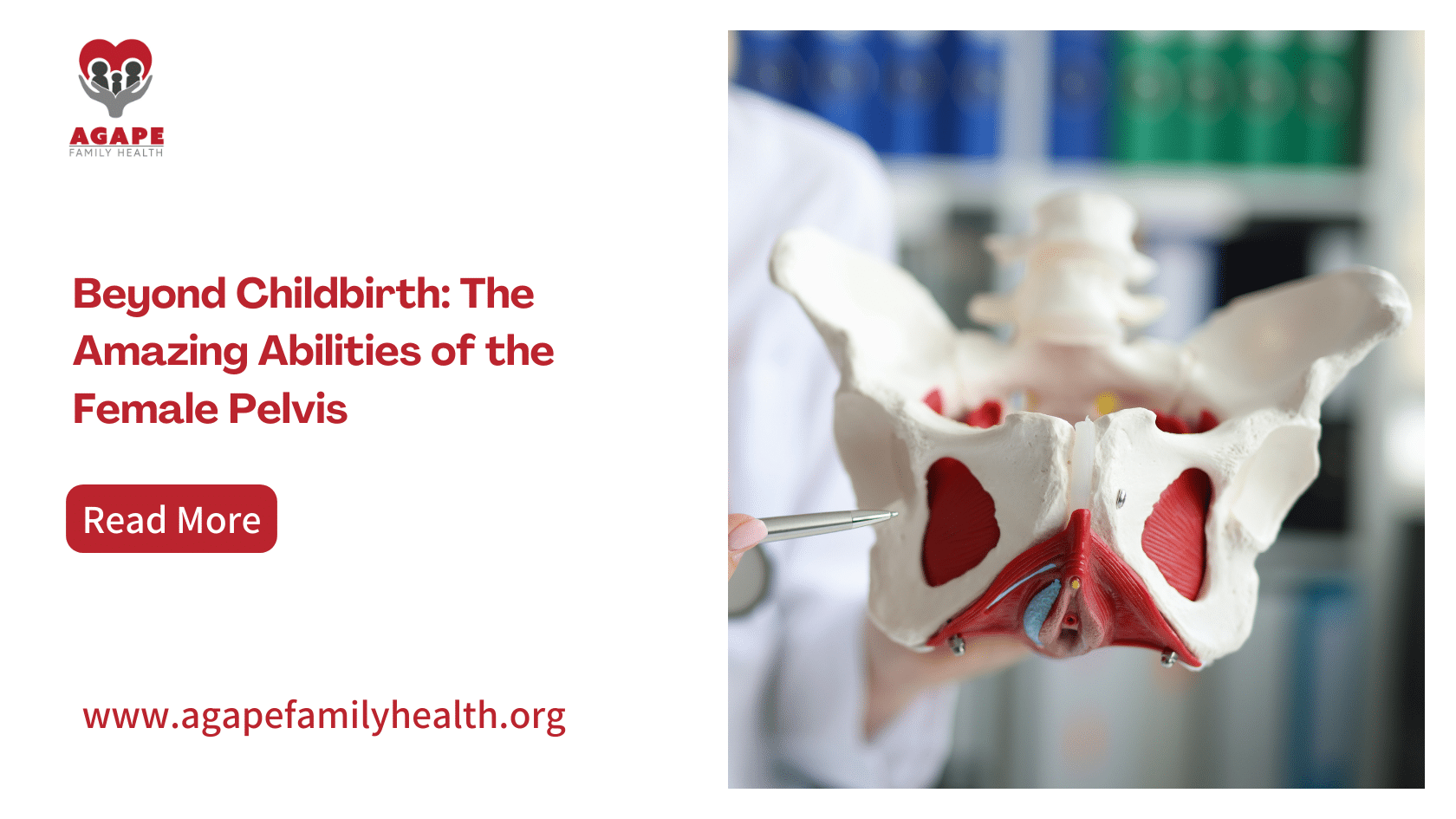In the realm of women’s health, the female pelvis is an intricate and remarkable part of the body. Beyond its primary role in supporting the body’s core and facilitating childbirth, the female pelvis plays a pivotal role in various aspects of a woman’s life. In this informative article, we will delve deep into the wonders of the female pelvis, discussing its amazing abilities, the importance of regular check-ups, and the medication required for optimal pelvic health before and after childbirth.
Understanding the Female Pelvis
The female pelvis, often referred to as the pelvic girdle, is a complex structure consisting of bones, muscles, ligaments, and connective tissue. It serves several crucial functions:
Structural Support

Anatomy
The pelvic girdle is made up of the ilium, ischium, and pubis bones, which are fused together to form a basin-like structure. In females, the pelvis tends to be broader, shallower, and more circular compared to the male pelvis. This structure not only supports the spinal column but also distributes weight to the lower limbs.
Biomechanical Importance
The female pelvis structure is highly suited for bipedal locomotion, allowing for efficient walking and running. The structure helps to balance the torso over the legs, acting as a fulcrum for the spinal column and distributing the upper body weight. The configuration also provides attachments for several muscles and ligaments, contributing to our ability to move and maintain posture.
Childbirth Facilitation
Adaptability
One of the most astonishing features of the female pelvis is its ability to adapt during childbirth. Hormones such as relaxin help to soften the ligaments of the pelvic joints, allowing for a more flexible structure during labor. This makes it easier for the baby to pass through the birth canal.
Evolutionary Aspect
From an evolutionary standpoint, the structure of the female pelvis represents a compromise. It is narrow enough to allow for efficient bipedal movement but also wide enough to facilitate the passage of a newborn. The human brain’s size and the constraints of the pelvis have essentially shaped the process of human childbirth, making it more complicated compared to other mammals.
Protection of Vital Organs
Shielding Function
The pelvic cavity houses and protects several vital organs. The bladder, uterus, ovaries, and part of the digestive system (specifically the sigmoid colon and rectum) are situated within this protective basin.
Health Implications
By shielding these organs, the pelvis contributes to the overall integrity of systems that are essential for waste elimination, reproduction, and digestion. This makes the pelvis a crucial component in women’s health. For instance, pelvic health can impact menstrual comfort, sexual function, and urinary continence.
Amazing Abilities of the Female Pelvis
The female pelvis is indeed an extraordinary structure with capabilities that facilitate critical biological and physiological functions. Here is an elaboration on some of these amazing abilities:
Childbirth Accommodation

Hormonal Influence
One of the most incredible aspects of the female pelvis is its capacity to adjust for childbirth. The hormone relaxin is secreted primarily during pregnancy and has the specific role of softening and relaxing ligaments in the pelvis. This hormonal influence increases flexibility and permits the pelvic bones to slightly separate, creating more room for the baby to pass through the birth canal.
Dynamic Changes
As the woman progresses through different stages of labor, the pelvis continues to adapt. During the active stage, the baby’s head descends and rotates within the pelvis, an action facilitated by its unique shape and hormonal softening. These changes are vital in ensuring the baby can be born safely while minimizing risk to the mother.
Adaptability
Lifecycle Changes
The adaptability of the female pelvis can be observed at different life stages. During puberty, increased estrogen levels trigger the widening of the pelvis to prepare the body for the possibility of childbirth later in life. This broadening also affects the body’s center of gravity and biomechanics.
Menopausal Transition
Hormonal changes during menopause like decreased estrogen can lead to a reduction in bone density and possible changes in the structure of the pelvis. While these changes might introduce challenges such as an increased risk of fractures, they underscore the pelvis’s ability to adapt to a woman’s changing hormonal landscape over her lifetime.
Pelvic Floor Control
Muscular Network
The pelvic floor is a complex network of muscles, ligaments, and connective tissue that acts like a sling to support the pelvic organs. It plays a vital role in controlling urination, defecation, and even sexual function.
Exercise and Health
Strengthening these muscles through exercises like Kegel exercises can enhance bladder and bowel function, reduce the risk of pelvic organ prolapse, and even improve sexual satisfaction. Women are often encouraged to engage in pelvic floor exercises post-pregnancy and during menopause to maintain optimal pelvic health.
Mind-Body Connection
Interestingly, the pelvic floor is not just a physical entity but has a complex relationship with the nervous system. It is influenced by emotional states, stress, and even mental focus, showcasing a multifaceted dimension to its function and control.
Ensuring the Health of the Female Pelvis

Given the astounding abilities and essential functions of the female pelvis, it’s vital to keep this complex structure healthy and well-functioning. This often involves a multifaceted approach encompassing nutrition, exercise, and regular medical check-ups. Below are some practical guidelines for ensuring the health of the female pelvis.
Nutritional Support
Calcium and Vitamin D: To maintain strong pelvic bones, especially important for women who are pregnant, breastfeeding, or going through menopause, adequate calcium and Vitamin D are essential. Dairy products, fortified foods, and supplements are good sources.
Hydration: Proper hydration supports overall pelvic health by aiding in urinary function and preventing urinary tract infections, which can negatively affect the pelvic region.
Physical Exercise and Conditioning
Kegel Exercises: One of the most recommended practices for pelvic health is the Kegel exercise, which strengthens the pelvic floor muscles. This can improve urinary and bowel function and is particularly recommended after childbirth.
Yoga and Pilates: These exercises are excellent for enhancing pelvic floor strength and stability. They also help improve posture, which indirectly benefits the pelvis by distributing weight more evenly.
Cardiovascular Workouts: Regular aerobic exercise can improve blood flow to the pelvic area, supporting overall pelvic health. It also aids in maintaining a healthy weight, thereby reducing stress on the pelvis.
Medical Check-Ups and Screenings
Annual Pelvic Exams: Women are advised to have regular pelvic exams to check for any abnormalities that may indicate conditions like pelvic inflammatory disease, cysts, or fibroids.
Ultrasound Scans: For women experiencing pelvic discomfort or planning a pregnancy, an ultrasound can provide detailed images of the pelvic organs, helping in early diagnosis and treatment planning.
Hormonal Checks: Especially crucial during life transitions like menopause or after childbirth, hormone levels can significantly impact pelvic health. Consult your healthcare provider for appropriate tests and treatments.
Emotional and Mental Health
Stress Management: Chronic stress can lead to pelvic floor dysfunction. Techniques such as mindfulness, deep breathing exercises, and stress management programs can be helpful.
Sexual Health: A fulfilling sexual life is not only emotionally beneficial but can also improve pelvic floor function. However, it’s essential to listen to your body and seek medical advice if you experience any form of discomfort or dysfunction.
Conclusion
The female pelvis is an astonishing and multifaceted part of the female anatomy. Its remarkable abilities, including childbirth facilitation and structural support, underscore its significance in women’s lives. Regular check-ups and appropriate medication are vital for maintaining pelvic health, ensuring overall well-being. If you need to see a healthcare professional, get started on our women´s care services.



